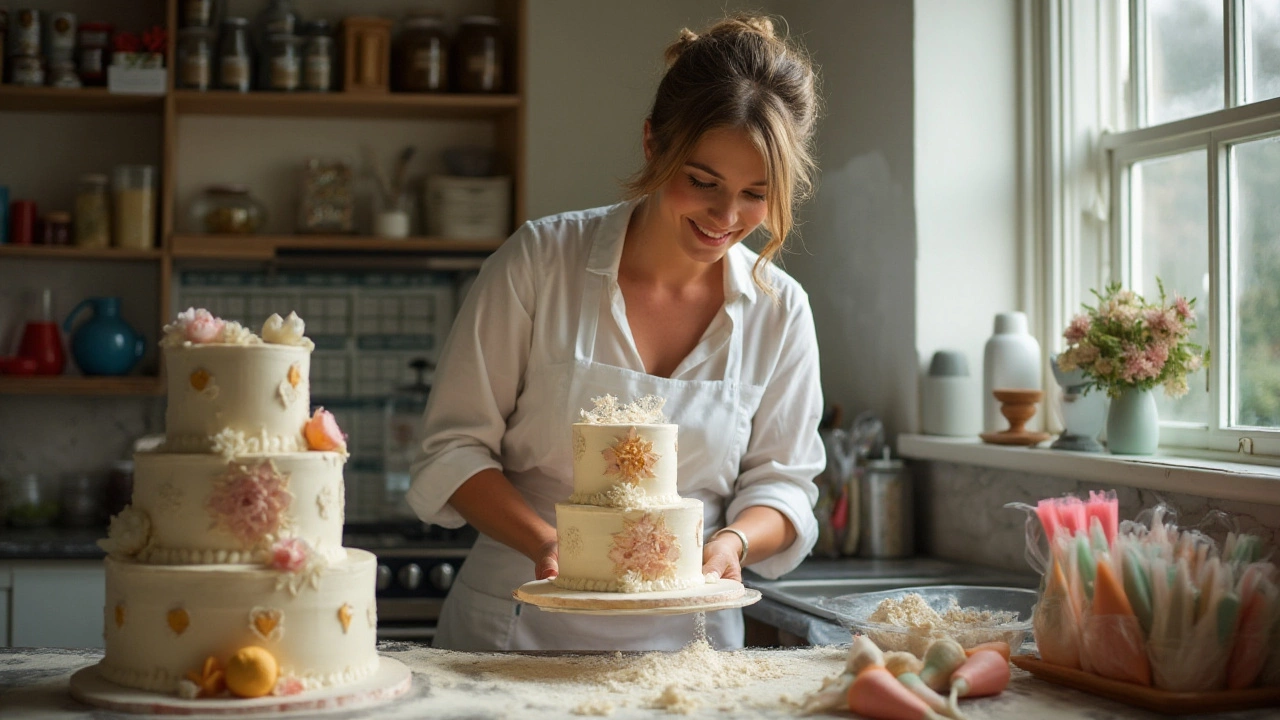Baking Timeline for Your Wedding Cake – What to Do and When
Planning a wedding cake can feel like juggling a dozen recipes at once. A solid baking timeline takes the guesswork out of the process, so you never scramble for ingredients or miss a tasting. Below is a straight‑forward schedule that fits most UK weddings. Adjust the dates to match your own planning pace, but keep the order of tasks the same.
Why a Baking Timeline Matters
Without a timeline, you might book a baker too early, run out of time for a trial, or end up storing a cake for weeks in the wrong conditions. A timeline gives you clear checkpoints: when to taste, when to lock in flavors, and when the final bake happens. It also helps you coordinate with the venue, florist, and photographer, ensuring the cake looks great and arrives on time.
Step‑by‑Step Wedding Cake Timeline
12‑14 weeks before the wedding: Start tasting sessions. Visit two or three bakers, bring ideas, and note which flavors you love. Decide on the cake size, number of tiers, and any dietary tweaks. Once you pick a baker, sign a contract and pay a deposit.
8‑10 weeks before: Finalize the design. Send sketches or pictures, confirm colours, and discuss decorations like fresh flowers or sugar work. Order any specialty ingredients you’ll need for a DIY component, such as fresh berries or edible gold.
6 weeks before: Schedule a cake tasting if you haven’t already. This is the moment to lock in flavours, fillings, and frosting types. Ask the baker about shelf‑life and storage requirements for your chosen cake.
4 weeks before: Confirm the final design and write down the exact delivery time. If you’re baking parts yourself, start test‑baking the layers to tweak baking times and cooling methods. Order any décor items that need to be shipped, like cake toppers.
2 weeks before: Do a full rehearsal bake of a single tier. This helps you gauge how long the cake will need to cool, how it handles transport, and whether any adjustments are needed for humidity. Store the test tier the same way you’ll store the real one – usually in a cool, dry fridge.
1 week before: Prepare all non‑perishable components (fondant, buttercream, ganache). Keep them in airtight containers. If you’re using fresh flowers, coordinate with the florist so they arrive on the day, not earlier.
Day before: The baker (or you) will bake the final layers, let them cool completely, then assemble and frost. Cover the cake loosely with a cake keeper or clean kitchen towel to protect it without crushing decorations.
Wedding day: Arrange transport. If the cake is being delivered, the baker should load it onto a sturdy board with a secure box. Set it up at the venue early, so any last‑minute adjustments (like adding fresh flowers) can be made calmly.
Stick to this timeline and you’ll avoid rush‑hour baking, forgotten décor, and soggy sponge. The cake will be fresh, beautiful, and ready for that first slice when the celebrations wind down.
Perfect Timing: How to Prepare a Wedding Cake in Advance
Preparing a wedding cake requires art, precision, and scheduling. The timeline for making a wedding cake can vary depending on several factors, including design complexity, ingredients, and preservation techniques. Knowing how far in advance to start is crucial for ensuring the cake remains fresh and delicious. This guide offers insights and tips for planning the creation of the perfect wedding cake.
View More